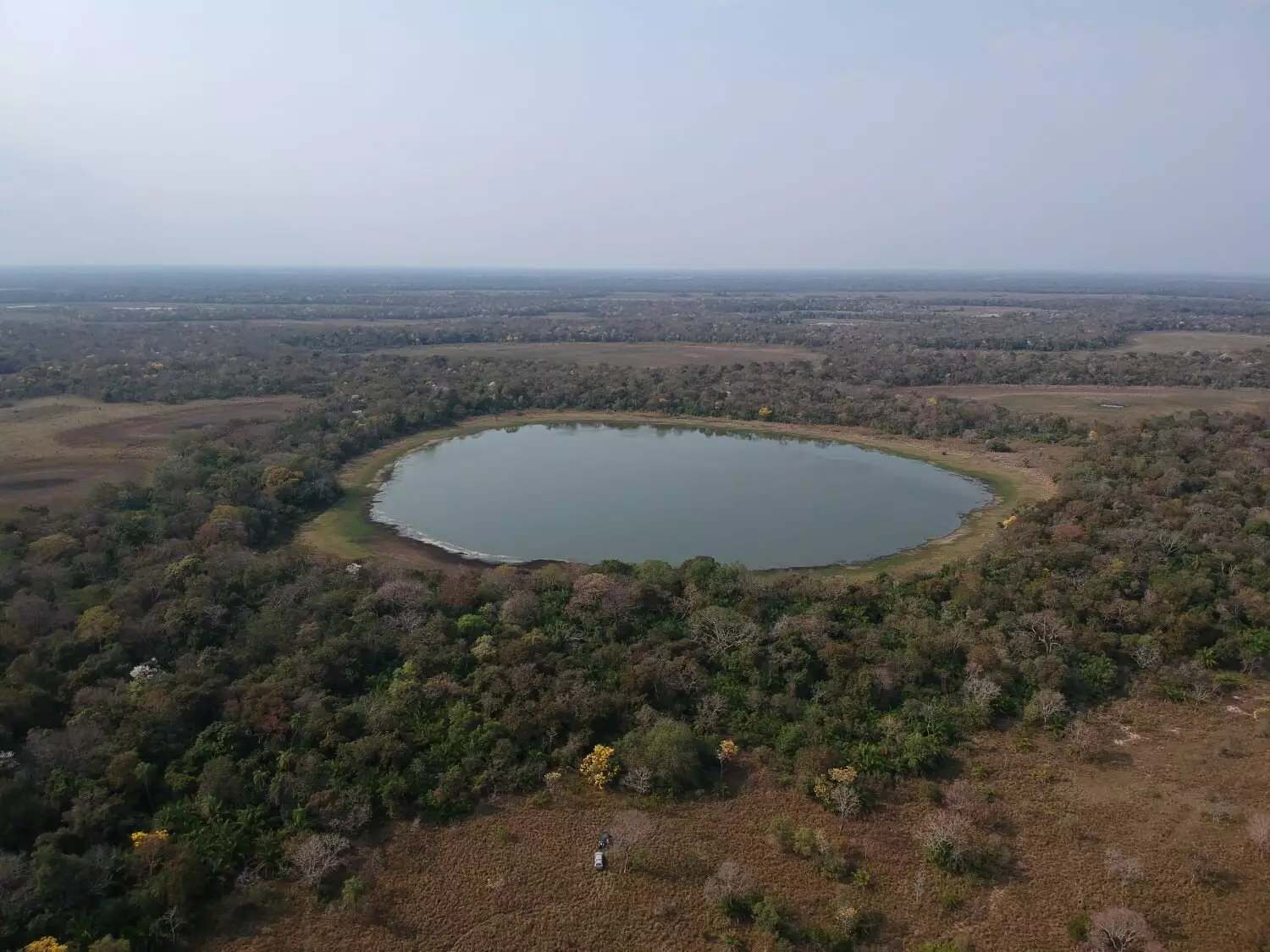The Pantanal, an expansive tropical wetland spanning approximately 153,000 square kilometers, stands as the largest of its kind globally. Primarily situated in southwestern Brazil, with portions extending into Bolivia and Paraguay, this ecosystem is celebrated for its rich biodiversity and biological productivity. While extensive research has typically focused on freshwater lakes regarding greenhouse gas emissions, a recent study shines a light on the unique soda lakes of this region. These lakes, characterized by their alkaline nature and varying nutrient levels, exhibit complex interactions that influence the emissions of greenhouse gases (GHGs), particularly in the context of changing climatic patterns.
The soda lakes in the Pantanal number around 900 and are distinguished by their shallow depths and high pH levels, occasionally reaching up to 11. The chemical composition of these lakes—rich in carbonates and bicarbonates—directly affects their microbial communities and plankton diversity. A recent study published by researchers from the University of São Paulo and the Federal University of São Carlos addresses the critical need to incorporate the unique biological functions of these microbial communities into existing greenhouse gas emission models. This research emphasizes that current models may underrepresent the complexity of soda lakes’ ecosystems, particularly regarding their response to climate change, extreme weather, and wildfire events.
Interestingly, the study categorizes the Pantanal’s soda lakes into three main types: eutrophic turbid (ET), oligotrophic turbid (OT), and clear vegetated oligotrophic (CVO). The findings revealed that ET lakes are significant emitters of methane, primarily due to extensive cyanobacterial blooms and the processing of decomposing organic matter. Understanding these emission pathways is crucial, as methane is a potent greenhouse gas with a warming potential significantly higher than that of carbon dioxide over a shorter time frame.
In the past few years, the Pantanal has experienced a worrying rise in extreme drought conditions and wildfires. The frequency of wildfires hit unprecedented levels, with over 22,000 incidents recorded in 2020 alone. Data from 2024 indicates a troubling pattern, with nearly 9,200 wildfires occurring in the first eight months—significantly surpassing the total number from previous years. These extreme conditions not only threaten biodiversity but also amplify the challenges associated with greenhouse gas emissions from soda lakes.
As run-off water decreases due to droughts, the concentration of salts increases, which can further alter the lakes’ microbial communities. The research indicates that such changes can transform areas traditionally characterized by biodiversity into potential hotspots for greenhouse gas emissions.
Microbial Functions: The Unseen Drivers of Ecological Change
Microorganisms play a vital role in regulating ecological processes within these soda lake ecosystems. A significant finding from the research is that the composition and functionality of microbial communities must be central to any analysis regarding greenhouse gas emissions. Cyanobacteria emerge as crucial players, performing photosynthesis and carbon fixation under varying environmental conditions. During the dry season, they help maintain carbon cycling by absorbing CO2, while in wetter periods, they support various bacterial growth.
Moreover, the study pushes for a nuanced understanding of how these microbial communities respond to environmental pressures, particularly in the face of climate change. The intricate dynamics among the microbial life, along with the sediment processes of decomposition, have profound implications for greenhouse gas emission estimates.
The soda lakes of the Pantanal are not merely isolated bodies of water; they are complex ecosystems influenced by a myriad of factors, including climate change and nutrient dynamics. The urgent recommendations for further research emphasize the necessity to deepen our understanding of these lakes’ microbial communities and their contributions to greenhouse gas emissions. As these ecosystems continue to evolve due to climatic shifts, comprehensive studies aimed at understanding their biogeochemical cycles will be indispensable.
The potential for these lakes to become major sources of greenhouse gas emissions calls for immediate attention and action. As researchers work to refine models and explore geochemical functions, the imperative remains clear: preserving the biodiversity and ecological integrity of the Pantanal is essential for mitigating climate change impacts and sustaining global environmental health.


Leave a Reply